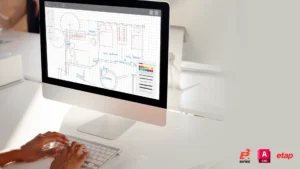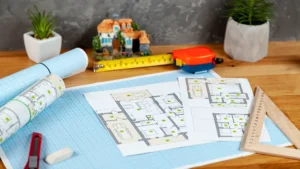10 Ways BIM Is Changing the Construction Industry
Introduction
With its advanced digital approach to managing and visualizing functional and physical attributes of buildings and structures, Building Information Modeling (BIM) is revolutionizing construction industry. Imagine a situation where architects, engineers & construction experts work together seamlessly, reducing mistakes & speeding project schedules—all while saving funds and resources. See how this new technology is completely changing construction industry by understanding our list of top 10 benefits of BIM, which includes reliable facts and real-world examples.
Top 10 Benefits of Building Information Modeling (BIM)
1. Better Design Quality
BIM improves design quality by providing complex 3D visualization and enabling real-time stakeholder engagement. This detailed comprehension enables careful design analysis and improvement before starting construction. A McGraw-Hill Construction study states that around 70% of BIM users have seen an improvement in quality of their projects’ designs.
For example, Shanghai Tower project’s worldwide team collaborated efficiently and made necessary revisions, thanks to use of BIM to construct complex 3D models. This led to completion of high-quality design on schedule and under budget.
2. Improved Teamwork & Interaction
BIM method makes teamwork and simultaneous work on a single file possible, improving efficiency and saving time. To prevent miscommunication, role-based access guarantees that team members view only data related to their duties. Enhancing communication overall, this collective digital area allows smooth data sharing and real-time monitoring across many applications and disciplines.
One such example is Crossrail project in London, where more than 10,000 people from different teams were involved in making one of Europe’s largest infrastructure projects, more than 100 kilometers. The use of BIM in project allowed persons from 30 different organizations and units to work on a single model and share real-time information, improving efficiency of project. It also reduced design errors which improved project coordination.
3. Better Project Management
BIM includes all information of a project being constructed, from details of exterior and interior elements to different disciplines like ASMEPF and other connections of building. It also includes operational information, scheduling, time & cost of project. These detailed descriptions help contractors better plan construction and finally better project management.
One such example is renovation of Denver International Airport, where with help of BIM, a better logistics and scheduling plan was made, resulting in a 10% reduction in construction and renovation of Airport.
4. Real-time Monitoring
The coordinated model is monitored in real-time during development, enabling timely recommendations and adjustments. It also updates changes made in real-time to keep others working on up-to-date models. This increases the efficiency of project, enhances safety, better project management & keeps project on schedule. The One World Trade Center’s real-time monitoring helped keep project on schedule and error-free.
5. Enhanced Visualization
Better visualization through BIM model helps you get a realistic tour of structure being made. As BIM is a detailed 3D model of structure, it helps to understand every single detail, from ASMEPF connections to material being used, so that detailed model is seen, understood & modified before actual construction begins. It also allows a virtual tour of structure, giving more visual clarity to client.
An example of this is renovation of iconic Sydney Opera House. Detailed visual representation of complex structure helped the team to work efficiently and plan renovation process of Opera House.
6. Hazard & Risk Management
BIM, apart from giving details about structure, cost, project time estimations & more, gives you detailed information on potential hazards and risks at construction sites before it begins. It also informs through a thorough simulation of the conflicts, making everyone aware of the risks involved and how they can be overcome before the construction.
An example of such potential hazard detection and resolution was renovation of Heathrow Airport. Redevelopment of project included detection of hazards, according to condition of area, and then working on it, so that redevelopment could take place
7. Cost & Time Efficient
Improving teamwork, and reducing amount of errors in design, ultimately leads to lesser costs invested in fixing errors during construction. BIM allows early detection of clashes in different systems, which helps avoid costly on-site changes. Also, the software will enable us to estimate cost and budgeting of project, according to its size and use. It also lets you track project’s real-time money management, keeping things under budget.
According to reports from National Institute of Building Sciences (NIBS), estimated budget of a project is reduced by 20% using BIM.
8. Energy Saving & Sustainability
Use of BIM allows designers and constructors to know what will be energy use of building and then decide on what can be done to make minimal use of energy from building. This ensures that structure works more efficiently. BIM also helps in optimizing use of materials, which reduces wastage and promotes sustainability.
According to a finding by American Institute of Architects (AIA), a building’s energy usage can be lowered by up to 30% by using BIM at design stage.
9. Competitiveness
Using BIM enhances competitiveness in market, giving better outcomes for design models. BIM allows a streamlined flow of project, getting real-time updates, improving project outcomes & ultimately improving client satisfaction. This increases market value of company providing BIM services and the ones consuming service.
According to a statistic from Dodge Data and Analytics report on BIM, companies using BIM services have seen a 10% increase in their market share. This increase is explained by their increased capacity to complete projects on schedule, under budget & with better quality as a result of efficiencies brought about by BIM.
10. Collaboration with New Innovations
BIM can be integrated with new technologies like Artificial Intelligence(AI), Augmented Reality (AR), Virtual Reality (VR) & Internet of Things (IoTs), which potentially increases project’s capabilities. One such technological use with BIM was seen in building of U.S. Bank Stadium by Mortenson Construction. They used BIM with VR, to get a virtual understanding of stadium before it was built. Talking of AI as new trend, more BIM users are integrating AI with methods to get better design models or detailed project information.
Conclusion
By encouraging cooperation, improving design quality, reducing costs & promoting sustainability, Building Information Modeling (BIM) is transforming fields of architecture, engineering & construction. The data and real-world examples we’ve provided highlight obvious benefits of BIM and highlight how important it is to obtaining effective project outcomes.
BIM is positioned to dominate construction industry going forward as it continues to integrate with emerging technology, making it a vital tool for experts in the field trying to remain ahead of curve in a constantly changing environment.






